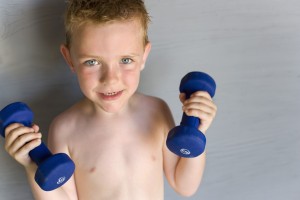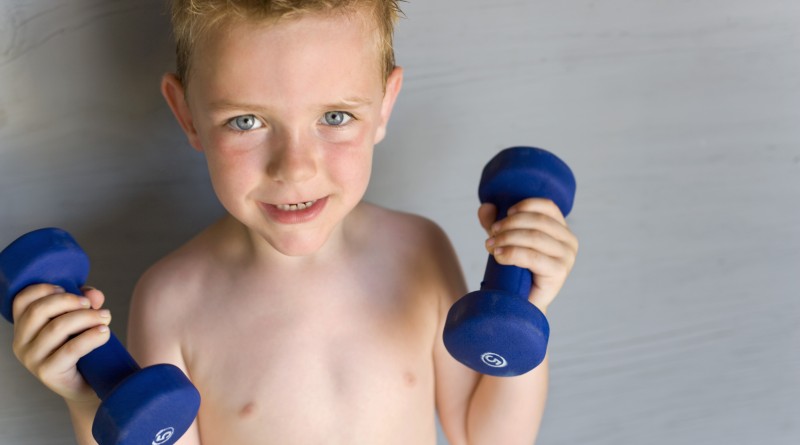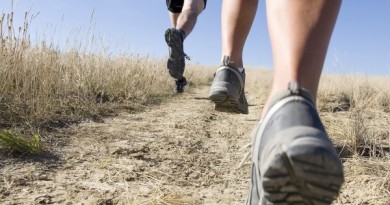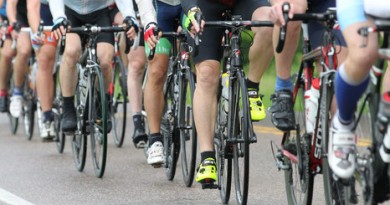When to Start Weight Training?
How old should your kid be before he or she starts training with weights? Dr. James Slauterbeck has the scoop here.

School has started. School sports have started. Ski season is nearly here. And all of a sudden you find your kid in your basement using YOUR weights. What’s wrong with this picture? Aside from the fact that maybe he or she should have asked first, not much.
I often get the question, is it safe for my kids to train with weights? The short answer is “yes.” A supervised strength training program is a safe and effective way for children to increase strength and performance. Many healthcare and fitness groups such as the American Academy of Pediatrics, American College of Sports Medicine, the American Orthopedics Society of Sports Medicine, and National Strength and Conditioning Association all support the safety and effectiveness of strength training in children.
Why should a kid use weights?
There are many advantages to weight training at an early age. Studies have shown that children who strength train have increased bone density, more developed physique and improved physical performance. They also achieve higher self-esteem and improved lifestyle habits that carry on through adulthood. Without a doubt, exercise and sports are an important part of maturation. The American Academy of Pediatrics recommends that school age children are involved in 60 minutes of strenuous exercise each day and this can include weight training.
How do I know if my child is ready?
Several factors determine when a child is ready to weight train, including a child’s physical, mental and social maturity. As soon as a kid is able to listen to instructors, follow directions and pass a medical exam, he or she can start using weights. There are, of course, some limitations: certain chronic illness/medical conditions, specific heart conditions, cancers, or Marfan’s syndrome (a syndrome defined by long fingers, unnaturally tall stature and heart abnormalities thought to be had by Abraham Lincoln) may preclude or limit a person’s strength trainings capabilities.
What should weight training include?
Every training session should include at least a 10-minute warm-up and a 10-minute cool down period. It is important to recognize that new studies do not support traditional static stretching (such as a hurdlers stretch) before athletic events. Static stretching should be done at a different time because it has been shown to decrease muscle force production immediately after the stretch. Instead, prior to lifting get your child to try other dynamic aerobic activities that will induce sweating, such as a light jog or a combination of push-ups, sit-ups and jumping jacks.
How far should my child push?
The program should be designed around lifting lighter weights, emphasizing higher numbers of repetitions and maintaining good form. A child must have demonstrated appropriate form before adding weights to the exercises. In fact, the American Academy of Pediatrics has made the statement that lifting the greatest weight for a single repetition should not be performed by children. Furthermore, children should work through a full range of joint motion and emphasize larger muscle groups (chest, legs or back rather than rotator cuff). As training progresses, the child can work smaller muscle groups. If a child experiences any joint pain or popping he or she should consult a doctor. Some muscle pain is perfectly normal after lifting.
What should my child’s exercise program include?
A child’s program should include various modalities that include using free weights, weight machines and rubber resistance tubing. Some types of fixed weight machines create challenges for smaller children because the machines lever arms are made for larger adults. Free weights are appealing to the smaller athlete, but younger children may not have the coordination to stabilize the weight during certain lifts. Lifting free weights can lead to injury in younger children because some children may lack the coordination to stabilize certain lifting motions. Resistance band training is a very safe way to strength train younger athletes as they develop better coordination.
But someone told me it was bad for
a kid…?
Some parents are afraid to have their children lift weights because of unfounded or controversial information. First, it is true that growth plate injuries can occur with lifting. However, most injuries occur as a result of lifting heavy weights, executing lifts with poor form and performing excessive numbers of repetitions. Second, some still believe that boys cannot improve their strength until after puberty
However, scientific evidence has demonstrated that children can improve strength by up to 50 percent after three months of a well-designed training program. The strength improvement of younger children comes first from neural adaptations (activation of muscles units, and improving muscle firing rate and pattern) and not from muscle hypertrophy (getting larger). As a boy approaches maturity, increase in muscle size occurs as a direct result of the sex hormone, testosterone.
Shouldn’t kids wait to do clean and
jerk lifts?
Lastly, people believe Olympic-style lifting, including the clean and jerk and snatch, should not be performed until after puberty. This is correct, and this style of lifting should not be allowed until after puberty and then only with appropriate supervision.
All myths aside, strength training is a great way to condition our youth and could help prevent injuries by building up an array of muscles, versus overusing certain ones that get developed by certain sports. Most of all, starting strength training early will teach kids healthy habits, a lesson that will stay with them as they mature.
 Dr. James Slauterbeck played football at Arizona State and is still active in many sports, especially cycling. He works with many young athletes as part of his practice as an orthopaedic surgeon in South Burlington and an Associate Professor of Orthopaedics in the Department of Orthopaedics & Rehabilitation at the University of Vermont College of Medicine
Dr. James Slauterbeck played football at Arizona State and is still active in many sports, especially cycling. He works with many young athletes as part of his practice as an orthopaedic surgeon in South Burlington and an Associate Professor of Orthopaedics in the Department of Orthopaedics & Rehabilitation at the University of Vermont College of Medicine




